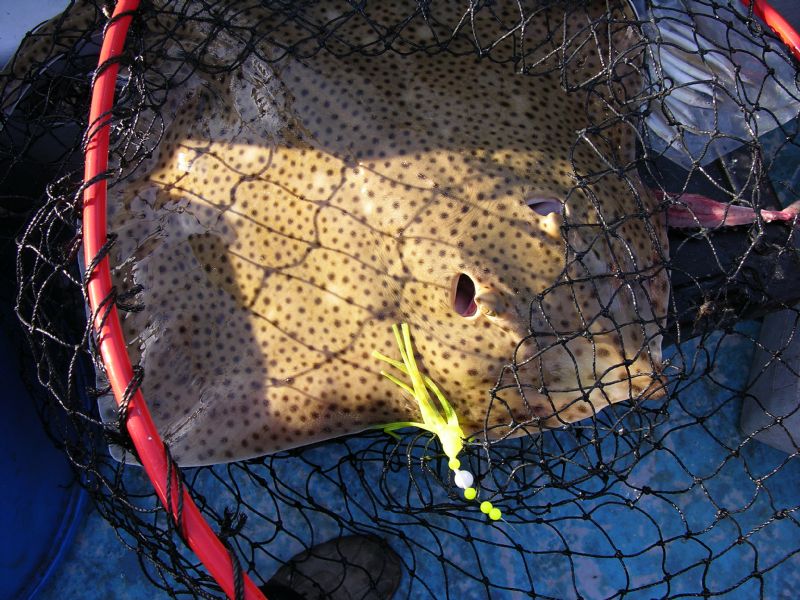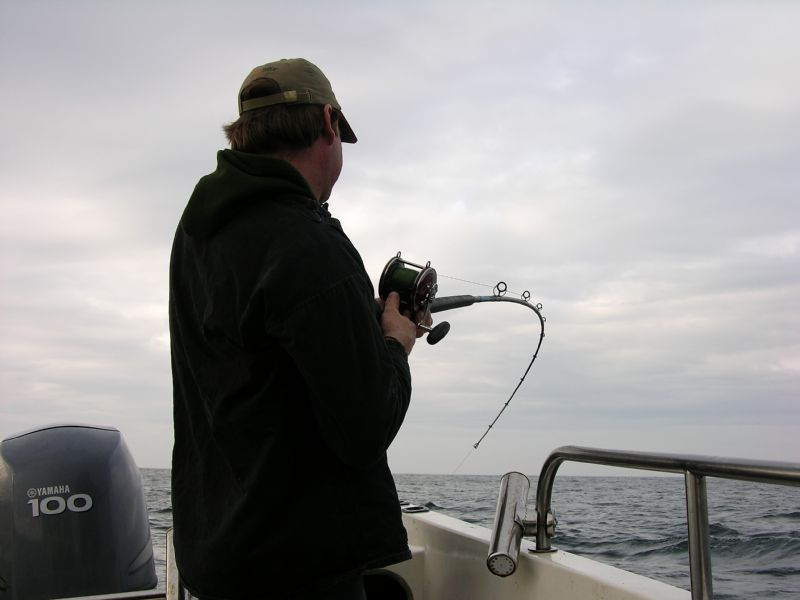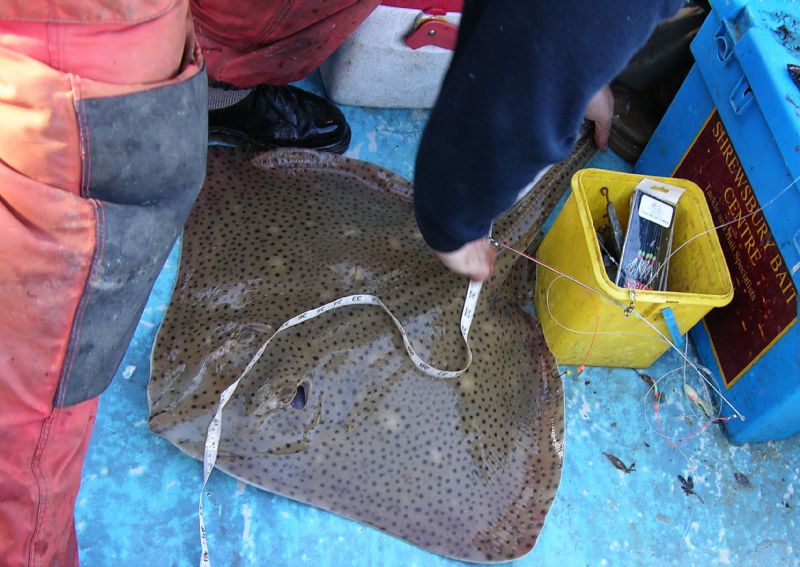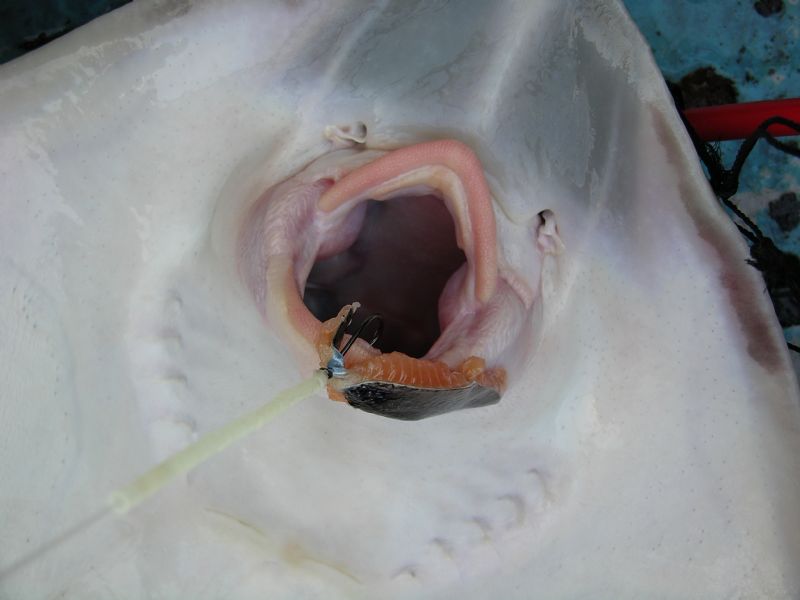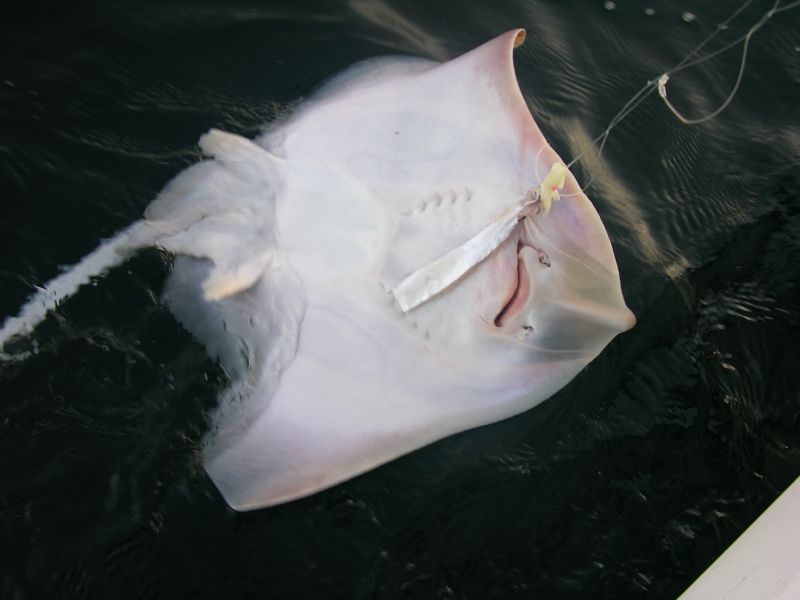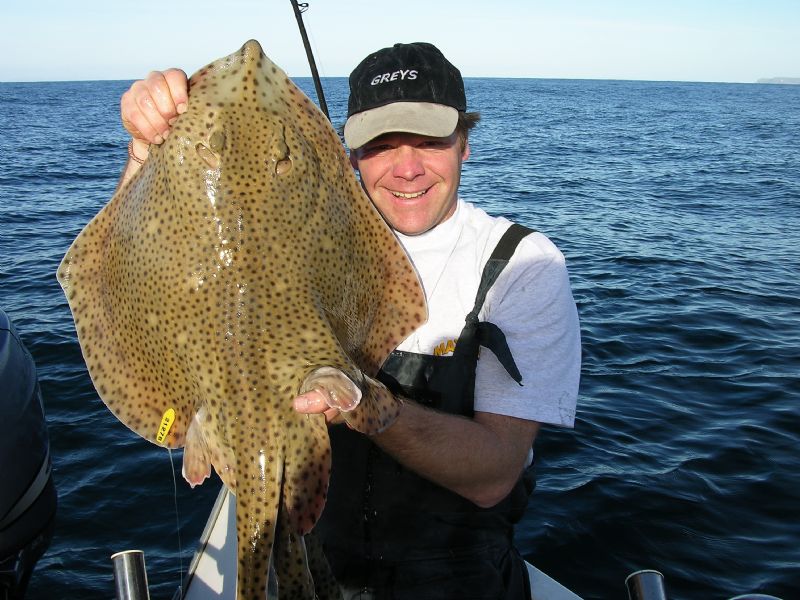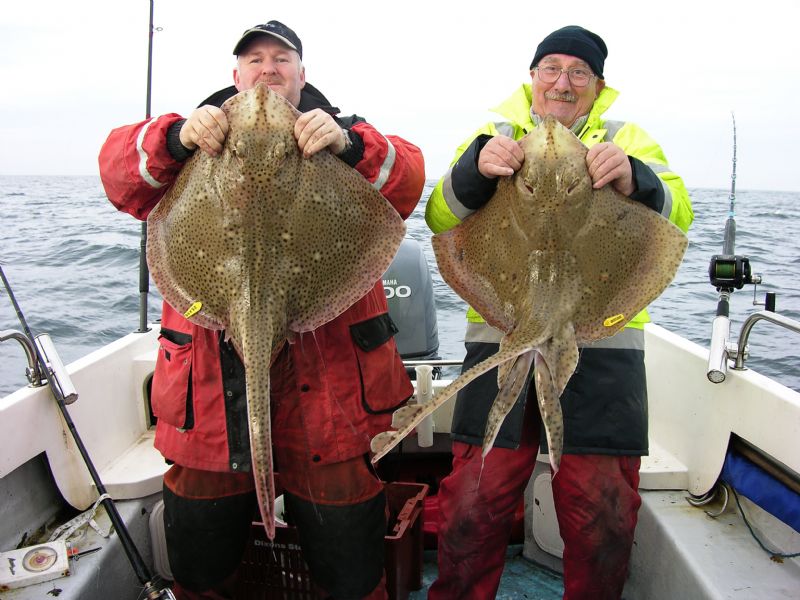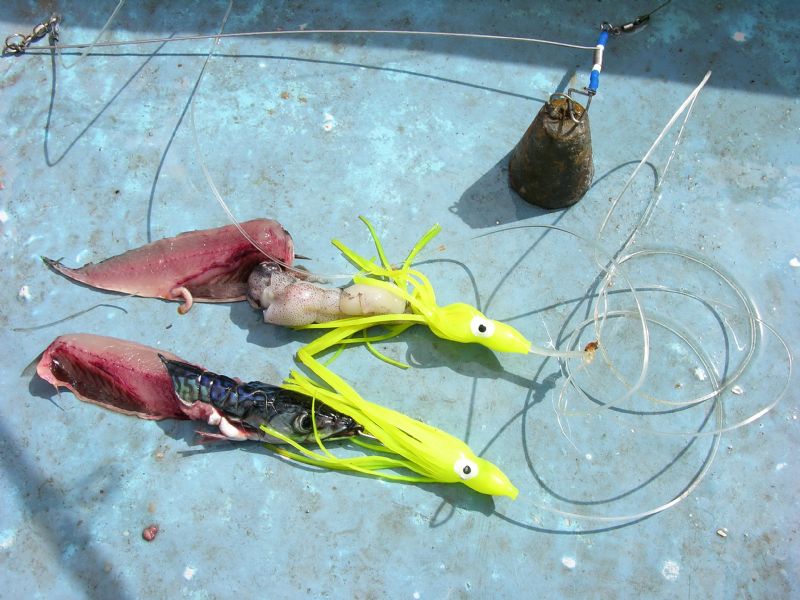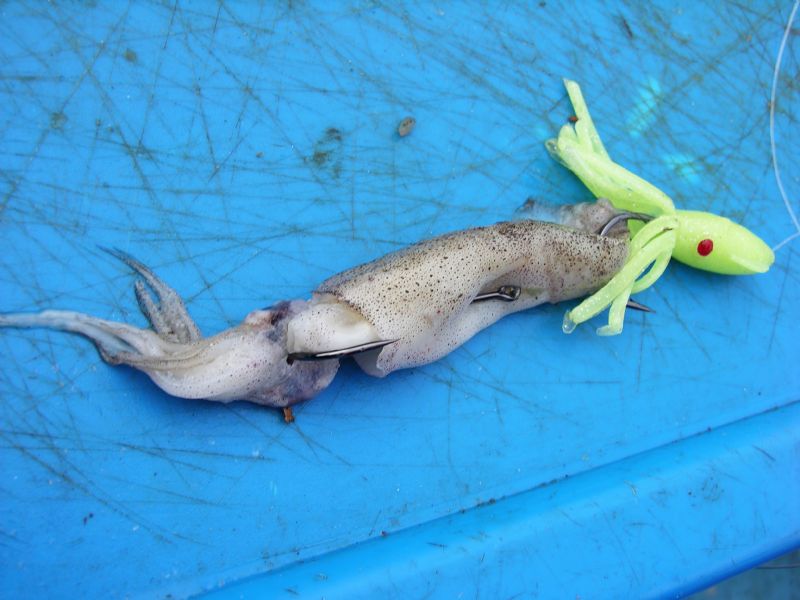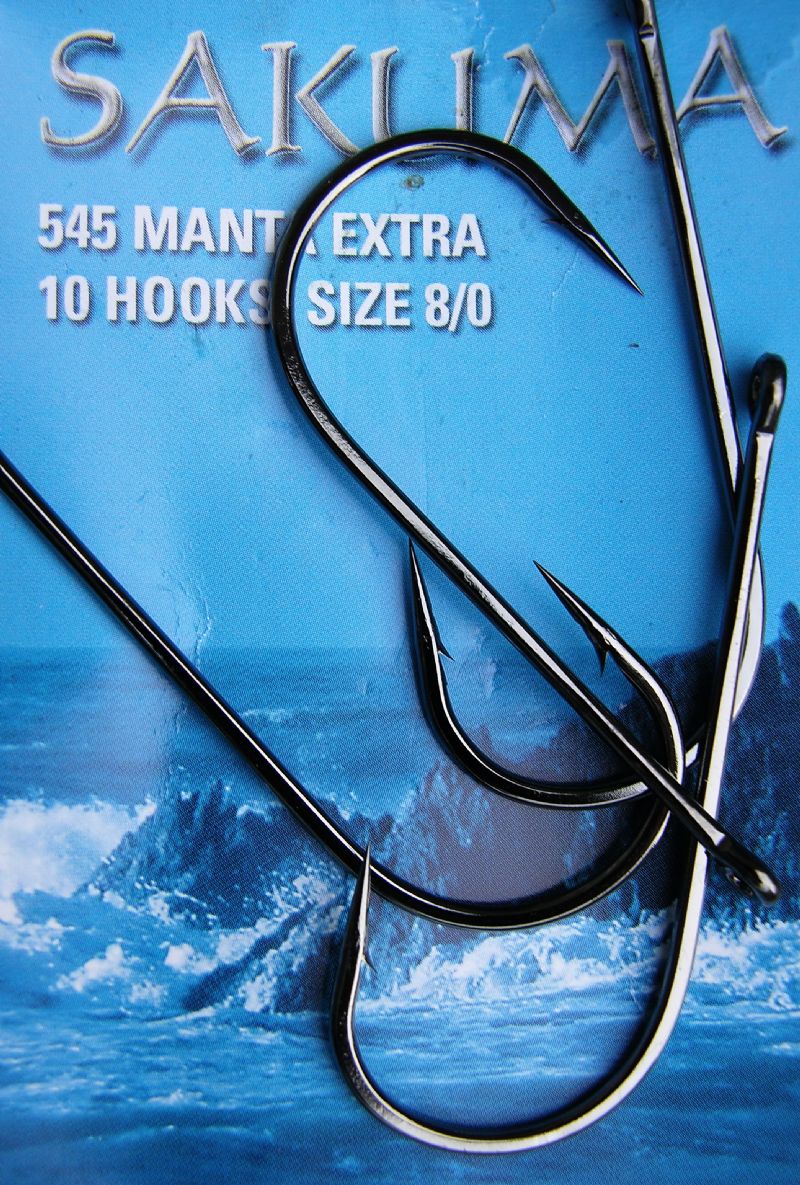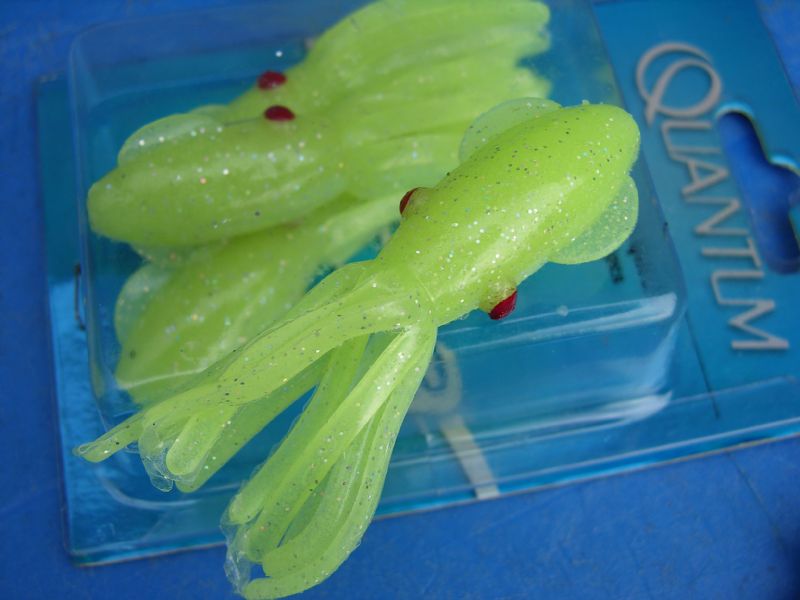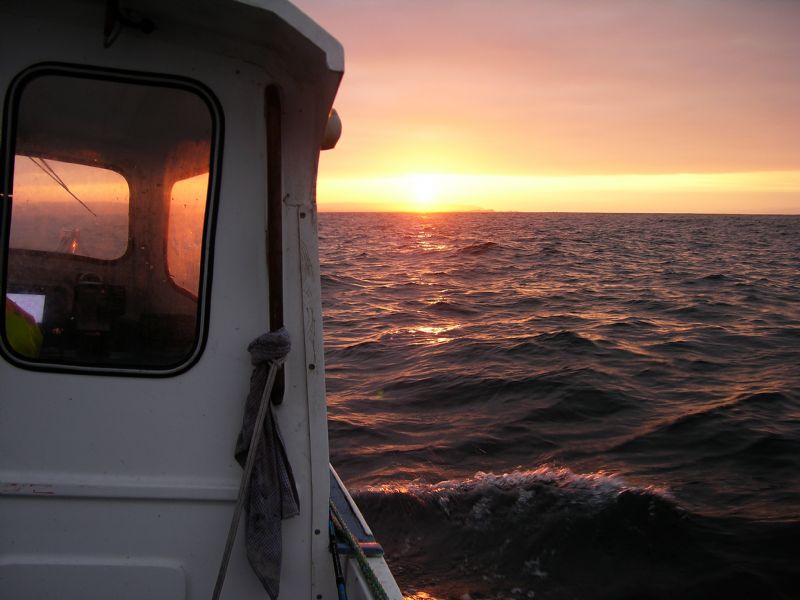Species hunt part 2 Blonde Ray
Blonde Ray
Fact file
Name Blonde ray (fish ID info click here)
Latin name Raja brachyura
Irish record 37 lbs caught on 10.10.2005 at Cobh by Paul Tennant
Specimen weight 25 lbs or 11.34 kilos
The trip
I recently found and marked an interesting sand bank that required some serious investigation. It was on the way back to harbour after a successful day targeting Pollack and Ling on an offshore reef. We stopped for an hour before sun-set and managed to tempt five beautiful Blonde Rays, all-weighing well into double figures. By choosing Blonde Ray as a species for this month’s article, it gave me the perfect excuse (not that I needed one) to re-visit this little sand bank and see if the ray were still there. With my usual posse of Dave Craig and Big Phil, we headed on yet another adventure, and were soon anchored over the “hump” previously tried and tested, albeit, only for an hour. On this occasion however, it was going to get our un-divided attention.
It takes a fair bit of pressure to bully a large ray off the sea bed!
What was unusual on this mark was just how quickly the rays found our baits, and again, on this visit, within half an hour, my rod buckled as a decent ray landed on the squid bait and headed down tide. It pays to slacken the clutch a little when the rods are in their holders, as these fish simply refuse to stop on the initial “hit” and bend the rod like a hairpin! I am convinced that they do not suck to the seabed as some have said, but rather, flutter their wings covering their back in sand. It takes a fair bit of constant pressure to raise the nose, forcing the tide to lift the ray up like a kite in a breeze. They are able to use this current to their advantage, especially the sinewy males, and scrap all the way to the surface.
Measurement, weighing and tagging before release
With the first ray safely in the net, it pushed the scales over the fourteen-pound mark, and set a reasonable benchmark, quite high for northern standards. Dave and Phil soon joined in with rays readily accepting Calamari Squid and frozen fillets of Mackerel (fresh mackerel is a non-starter this time of year). All fish were measured, weighed, tagged and carefully released as part of the on-going tagging scheme for the Inland Fisheries Ireland. As the tide eased, ray bites diminished and the good old “doggies” took over. This was our signal to “up” anchor and away for a go at the Pollack and Ling over deepwater reefs, but that’s another story!
This Blonde Ray was tempted with a fillet of Oily Rainbow Trout!
A quick tally showed that we landed and tagged sixteen Blondes, ranging from two pounds to eighteen pounds, with Dave finding the largest, a superb female of nineteen and a half pounds. Not a bad result, especially over a sand bank that was found purely by chance. To prove these fish were native to the area, another trip was planned for the following week. Dave could make it, but on this occasion Big Phil had other commitments and was duly replaced by Dessy, my old mate and long time angling buddy. At this time of year, days are short, and an early start happened to coincide with a flooding tide, which worked out perfectly.
Another Blonde, this one on Mackerel belly strip
Armed with running ledgers and four boxes of Squid, we were soon anchored bang on the mark, and within twenty minutes I had the first ray again. Only a small female of three pounds this time, but just as welcome all the same. I was interested to see if we could match the sixteen caught previously, and better still, if any would have one of our tags attached. The rays came in waves of three or four fish through out the flooding tide, with half hour blank spells in between, but fast enough to keep us on our toes, especially with Lesser-Spotted dogs queuing up to annoy us in between!
Again, all Blondes were quickly weighed, measured and tagged before returning to the water. The tide eased in strength and the brisk southerly wind took over, pushing us off the scent trail and out of the feeding zone. There was still a couple of hours of daylight left so I thought it was worth a go at re-anchoring, using another bag of “chum” in a bid to find the fish again, nothing ventured, nothing gained.
A double-figure male for the skipper
Using the chart plotter, I could easily see where we had been catching, and where we now were, due to change in tide and wind strength. A calculated guess with the anchoring position put us quite close to the original mark, and, you guessed it, straight back into feeding fish.
As is always the case, the day passed all too quickly. The dramatic winter sun-set heralded the end of another superb ray day. As the lads packed away the gear and tidied up, I had another tally of the scores that totalled twenty Blonde Rays in all. With three in the four pound region, another three breaking the seven pound barrier, five over ten pounds, two twelve’s, two fifteens, four seventeen’s and a nineteen yet again for Dave. None of the rays captured had a tag. What a fabulous day, and a mark that I am forced to keep close to my chest, as these fragile, slow growing species are in so much danger from commercial exploitation, it scares me even thinking about it.
With two nineteen pounders landed, each only six pounds shy of a specimen, I reckon its just a matter of time before we crack that, and catch up with the Clohessy’s down in Cork!
A female and a male taken at the same time by my crew, Dave and Des
Interesting facts
There is some common confusion regarding identification of Blonde Rays. They are similar to Spotted Rays in many respects. However, apart from the fact that spotted rays rarely exceed five pounds, the spots on the Blonde Ray extend to the outer most wing-tips of the body, whereas the spots on the Spotted Rays stop several centimetres short. This species is found from the North-east Atlantic, Eastern central Atlantic to the Mediterranean and the Black Sea.
Blondes are short snouted, and the outer angles of the wingtips are almost at right angles. The underside is white, with sandy or ochre coloured topside, covered in small black dots and occasional, larger, creamy coloured spots.
Similar to all rays, males can be identified from females by two elongated “claspers”, one either side of the tail. These are used during reproduction. The topside is covered in sharp spines or prickles, with further spines around the leading edge of the underside, although all these spines are absent in juveniles. These same spines are capable of cutting or puncturing skin when handled so caution is advised. Blondes are oviparous, which means, after internal fertilization, they lay eggs and the embryo develops outside the mothers body, feeding on the yolk sac. The spawning period is from February to August, and the adults are non-guarders, leaving scattered egg cases on the seabed, to develop and hatch by themselves.
Egg cases are the largest of all our native rays, averaging 100-143 mm in length, and 58-90 mm wide, and are laid in sand or gravel. Each egg case will have two sets of “horns”. One pair long and the other pair shorter and curled at the tips. If you find empty egg cases washed up on storm beaches, send this valuable information to The Shark Trust at www.sharktrust.org.
Bait
Blonde Ray feed primarily on fish and crustaceans, and are classed as hunter-predators. Calamari Squid and fresh Mackerel fillets are definitely the number one bait. Try two squid, Pennell rigged if you have plenty, or any Squid-Mackerel cocktail.
Calamari Squid or Mackerel-Squid Cocktails are superb Blonde Ray baits
Tackle
If tidal currents allow the use of lighter lead weights from eight ounces up to a pound, then a twenty-class boat rod will be ideal, however, a thirty-class rod will probably be more versatile. It will depend greatly on the venue. Match the rod with a Penn 4/0 or Abu 10,000 or similar, loaded with 30-50 lb b/s braid for maximum strength to diameter ratio. The braid will help cut through the tidal flow allowing lighter leads to be used.
For the end tackle, a running ledger is the normal set up. Slide a tubi boom onto the main line to help reduce tangles during the descent to the seabed. Zip sliders can be used if the tide is running fast. Use at least eight feet of 100lb nylon hook length with a sharp, strong 8/0 hook attached to the end, or double the hooks up as a pennell rig. I tried out a packet of Sakuma Manta hooks on this occasion and found them to be superb for ray fishing.
8/0 MANTA EXTRA SUPER STRONG BOAT FISHING HOOKS
If you wish, add some attractors above the hook. This may depend on the venue, or simply confidence in personal choice. I found that luminous muppets and rattling booby beads made a big difference to my catch rate.
Carry a decent set of un-hooking equipment such as pliers and a notched T-bar. Ray can engulf large baits, and rather than cause damage, deep hooks should be left to rust, or cut as near to the shank as possible. For this reason, always avoid stainless steel hooks.
Tactics
Seek out offshore sand banks as ray holding features. Drift at slack water to hunt out hot spots. When the tide runs, try anchoring using mashed fish in an onion sack as rubby dubby, tied to the anchor chain. This scent trail will help bring the fish to the boat.




